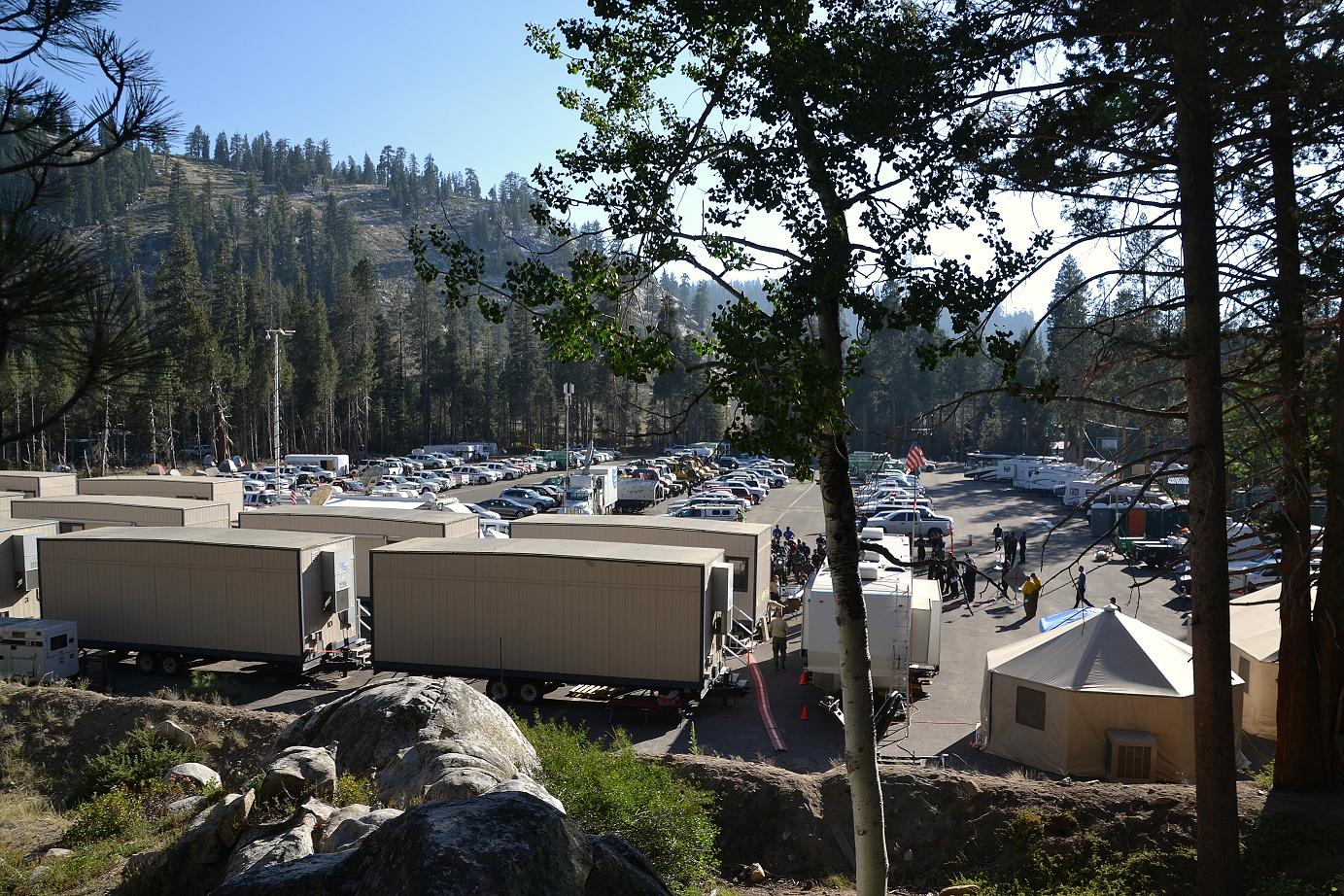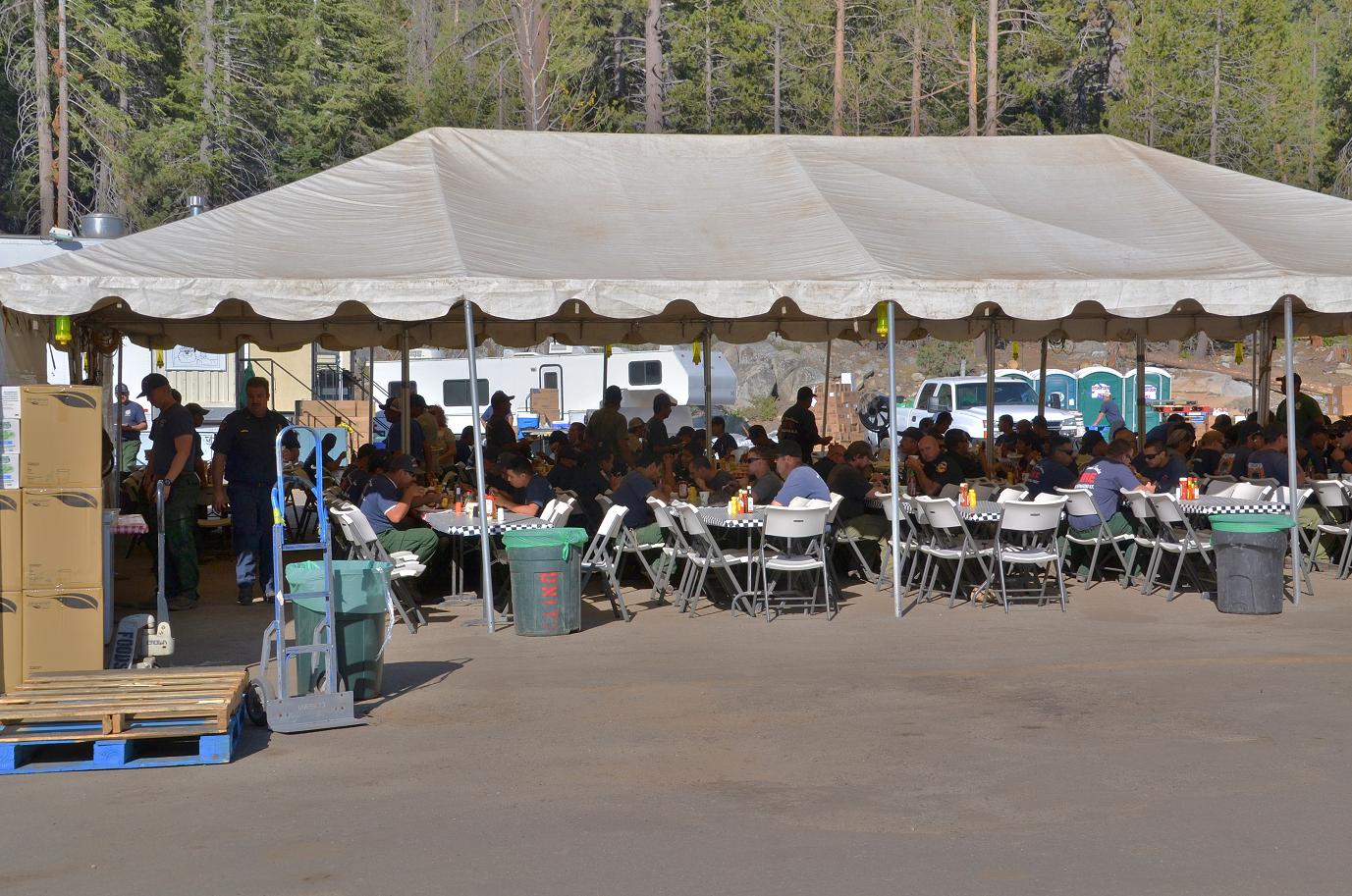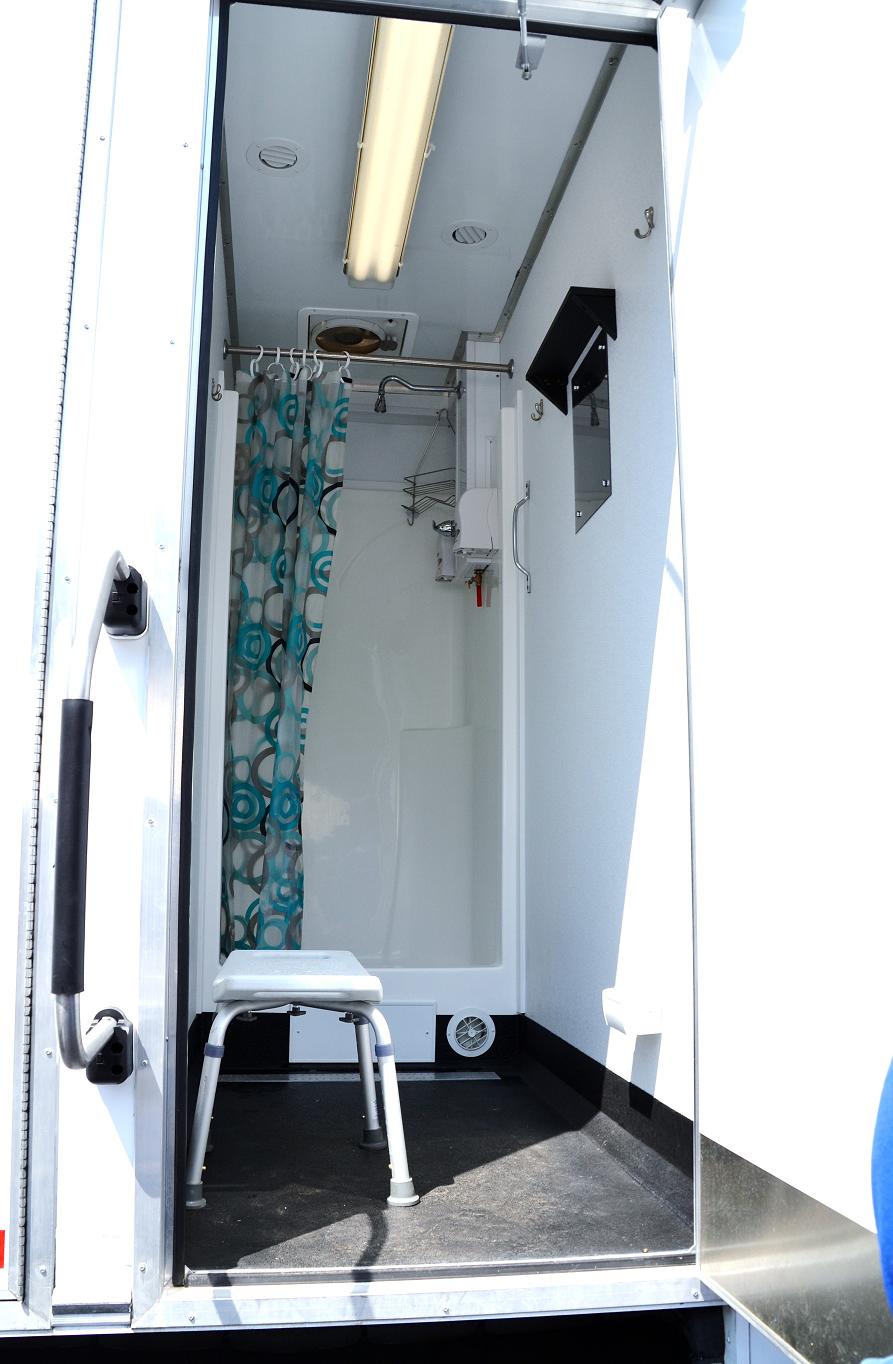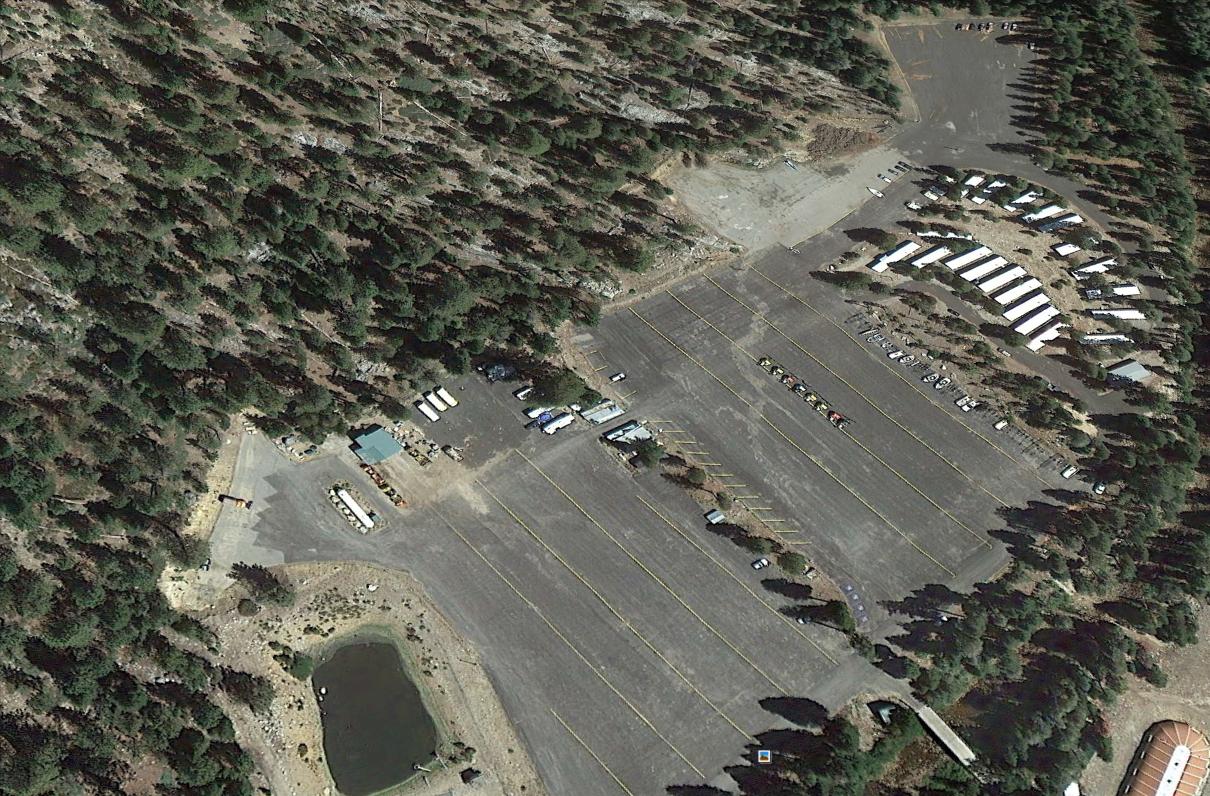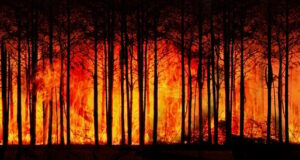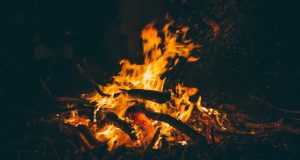HUNTINGTON LAKE – So what do you do when you have over 2,000 people, all working on a dangerous, complex and widely dispersed project, and you need centralized organization and coordination? You build a city, of course.
The Incident Command Post (ICP) for the Aspen Fire is exactly that, a tiny city spread across what is generally the parking lot for the China Peak Ski Resort.
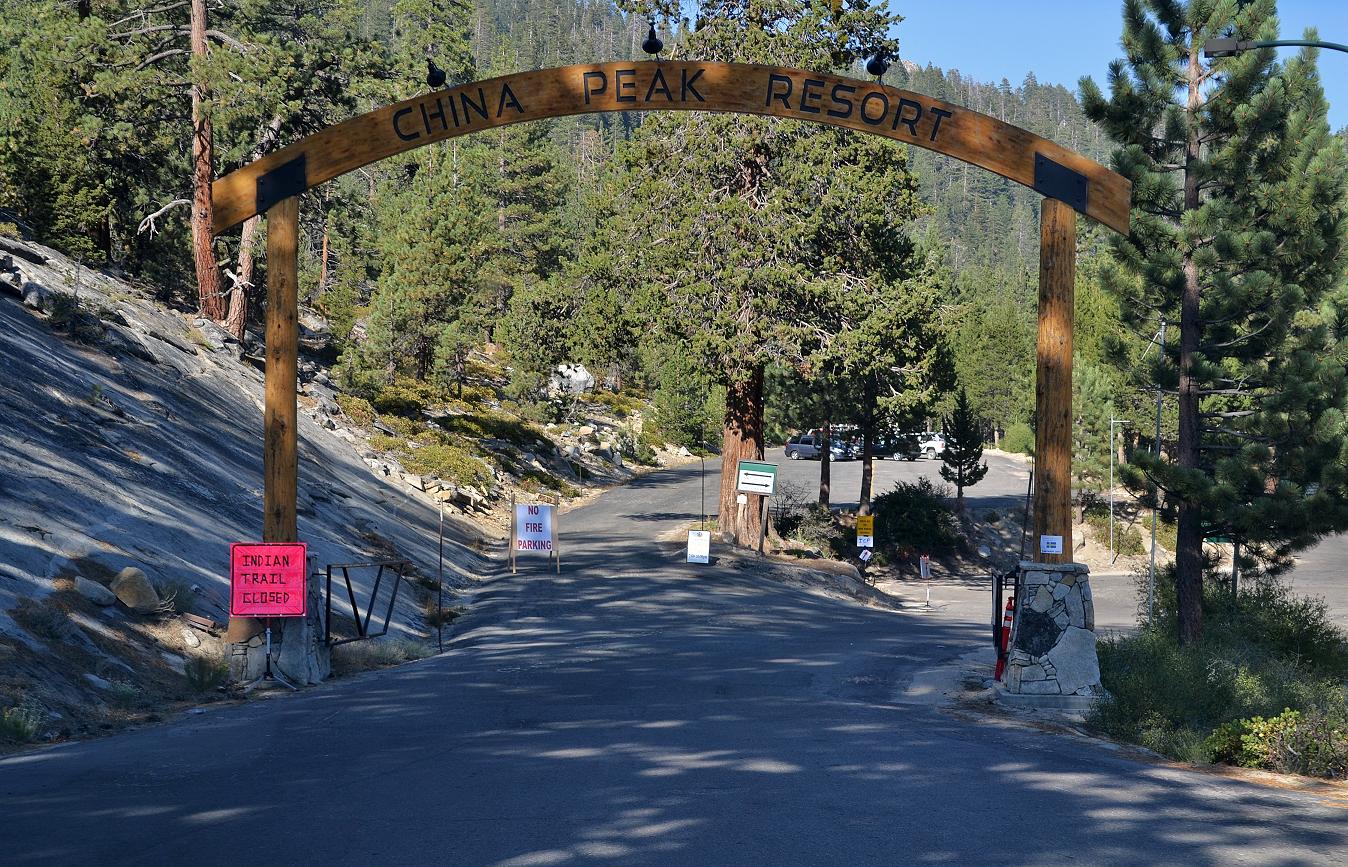
Just over 300 personnel staff the ICP (as of Aug. 2), starting with the “mayor,” Incident Commander David Cooper, District Fire Management Officer from the Bass Lake Ranger District, who is charge of all operations on the Aspen Fire.
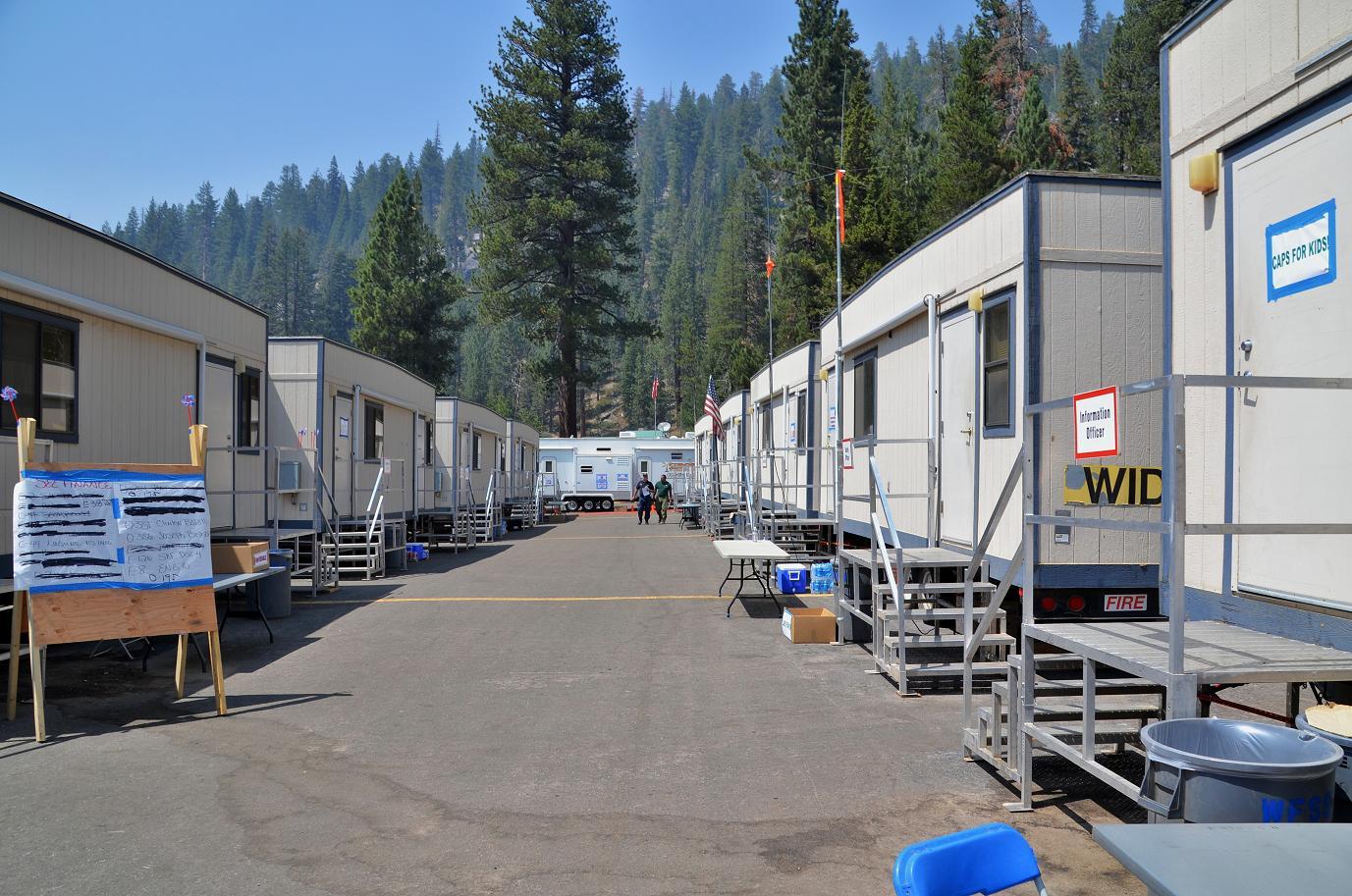
“This is where all our planning and operations take place,” Sieliet explained. “Everybody, at one time or another, ends up here.”
The words “fire camp” may conjure up images of sleeping bags under trees and washing clothes in the creek, but in order to support the efforts of firefighters working this hard and for this length of time, major infrastructure is required.
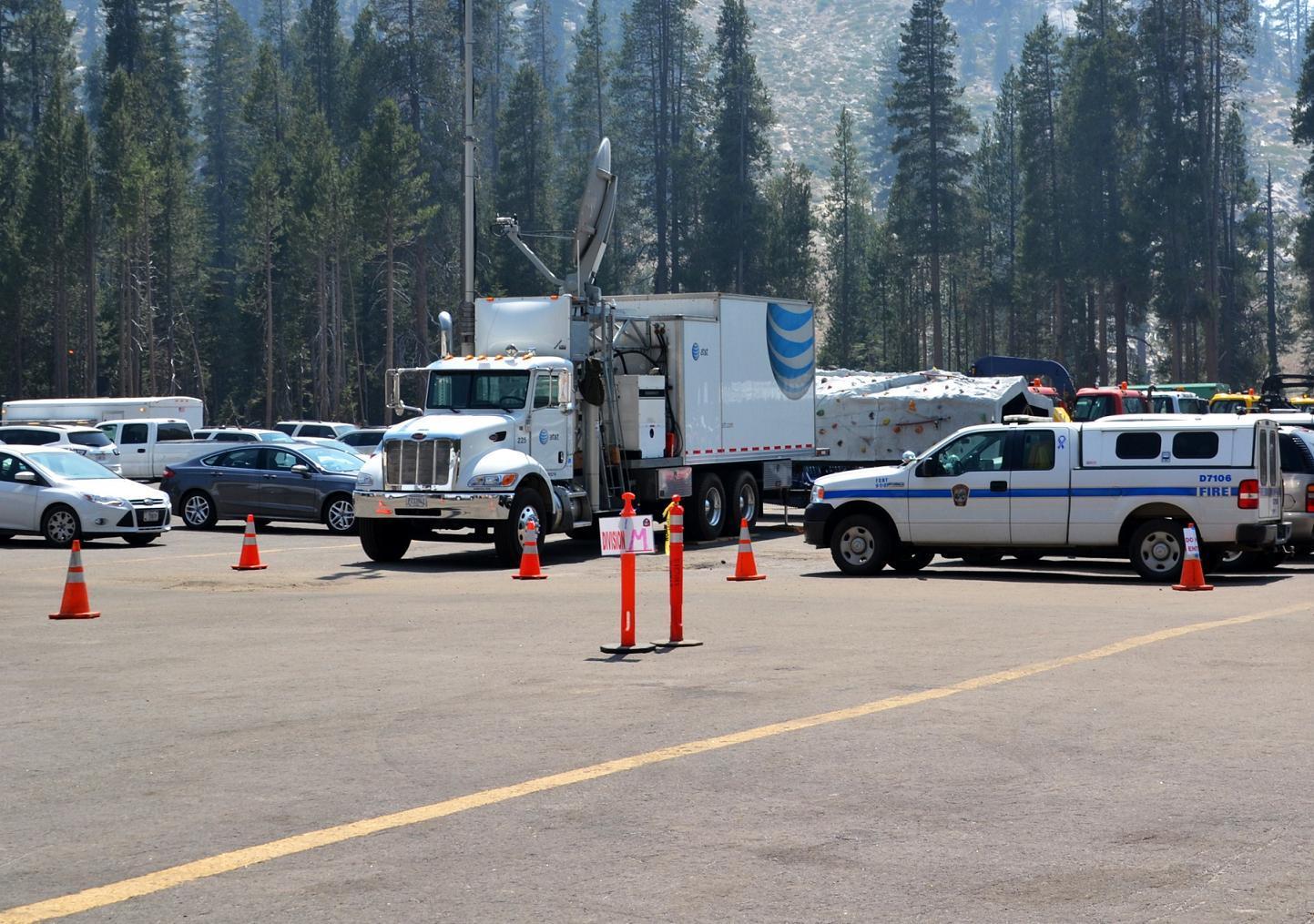
Computer and phone systems are in place, and an AT&T satellite truck provides service so that communication is possible in this remote location, and (some) cell phones have bars, allowing those who have been detailed to this fire to call their home units.
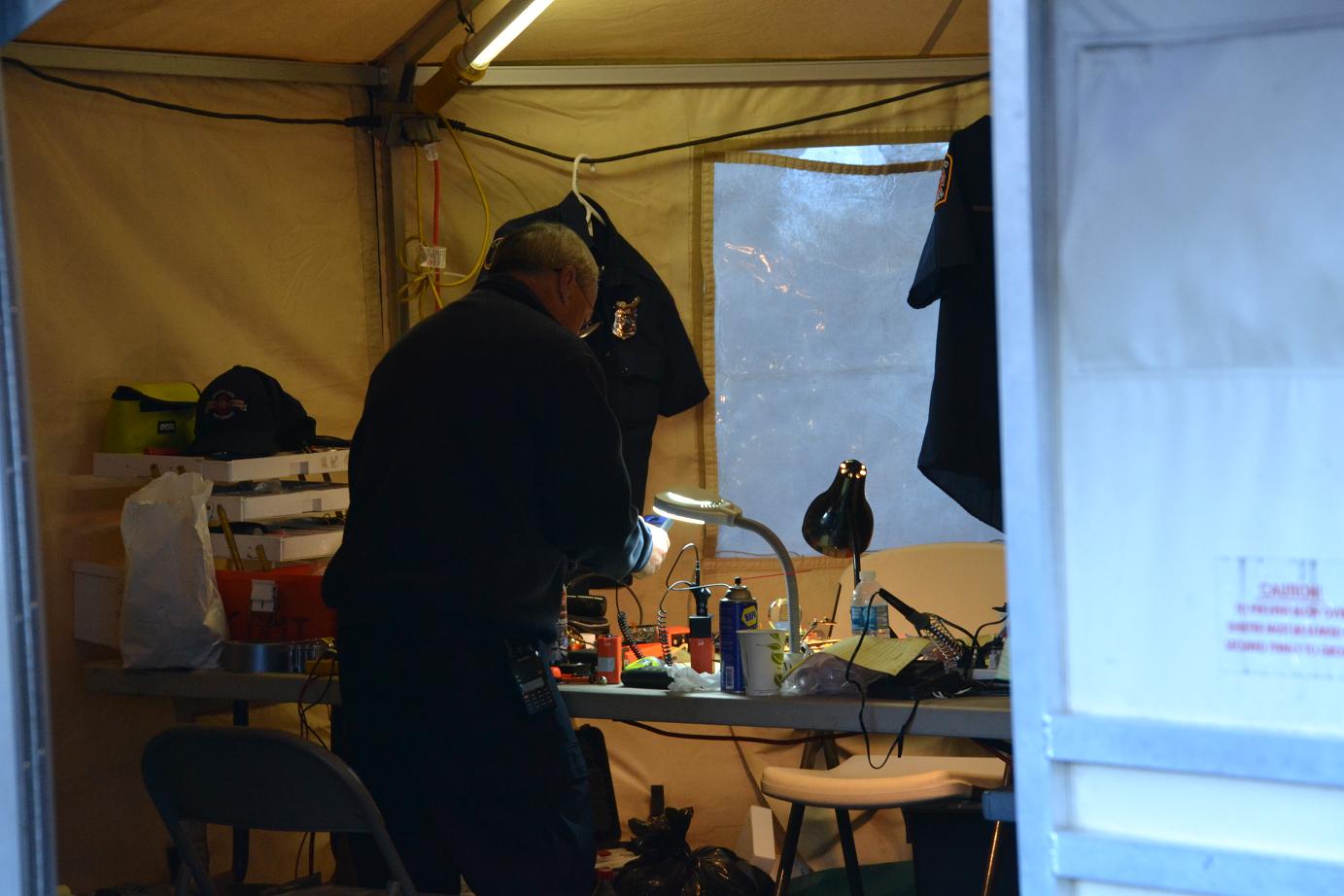
Radio communication is crucial at all times, and with over 130 radios in the field and 16 frequencies being utilized for different operations and sections of the fire, plus helicopter and air tanker operations, techs are kept busy repairing and preparing radios for the field.

When the day shift gathers for the morning briefing at 6 a.m., they are given new maps of the changes to the fire overnight, along with their assignments.
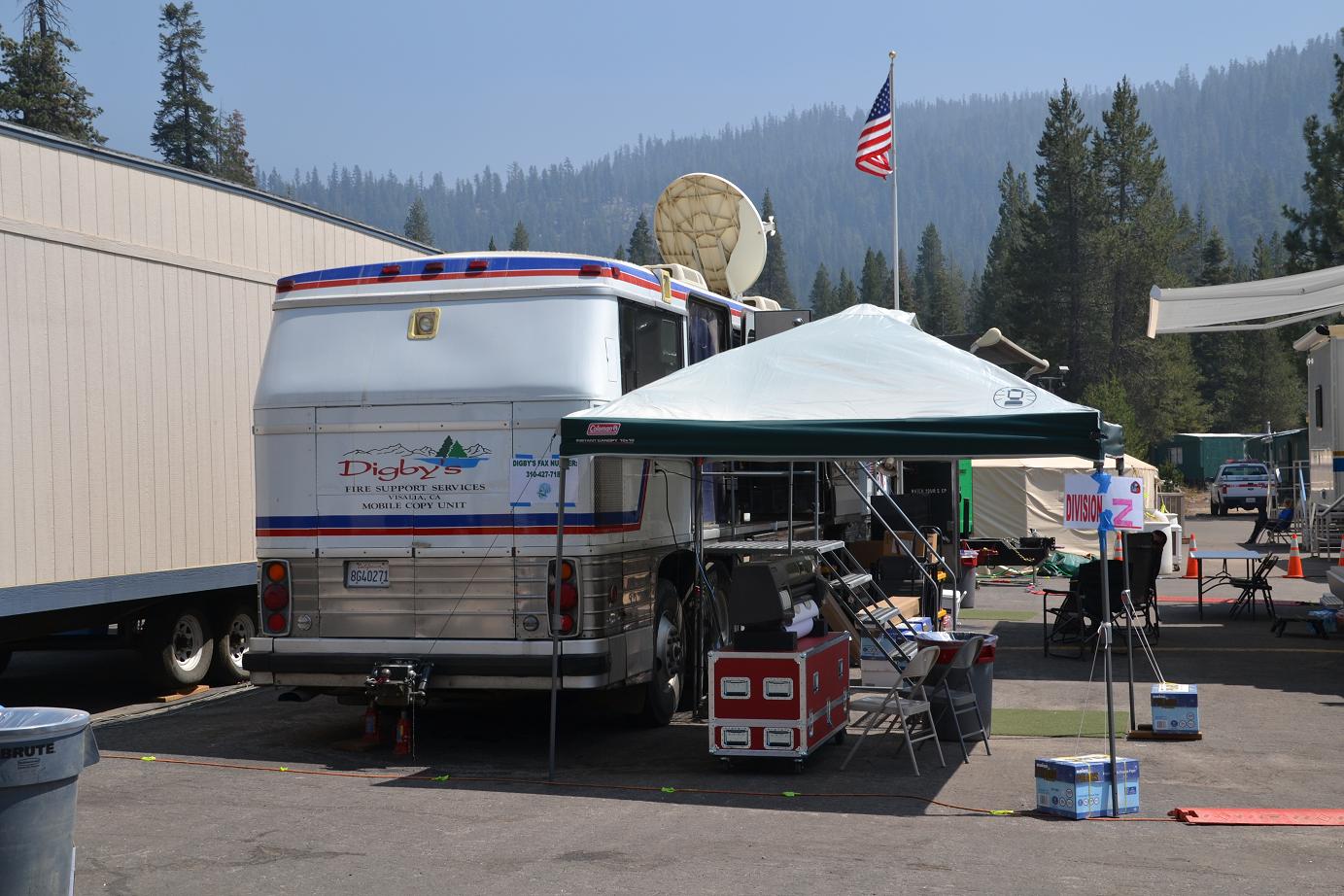
With the maps changing every day, along with weather, heat maps and other printed material that needs distributing, the camp has it’s own “Kinko’s,” a big mobile copying unit. All printed materials can be done on site as conditions and information changes, and crew bosses on up the line always have the latest information.
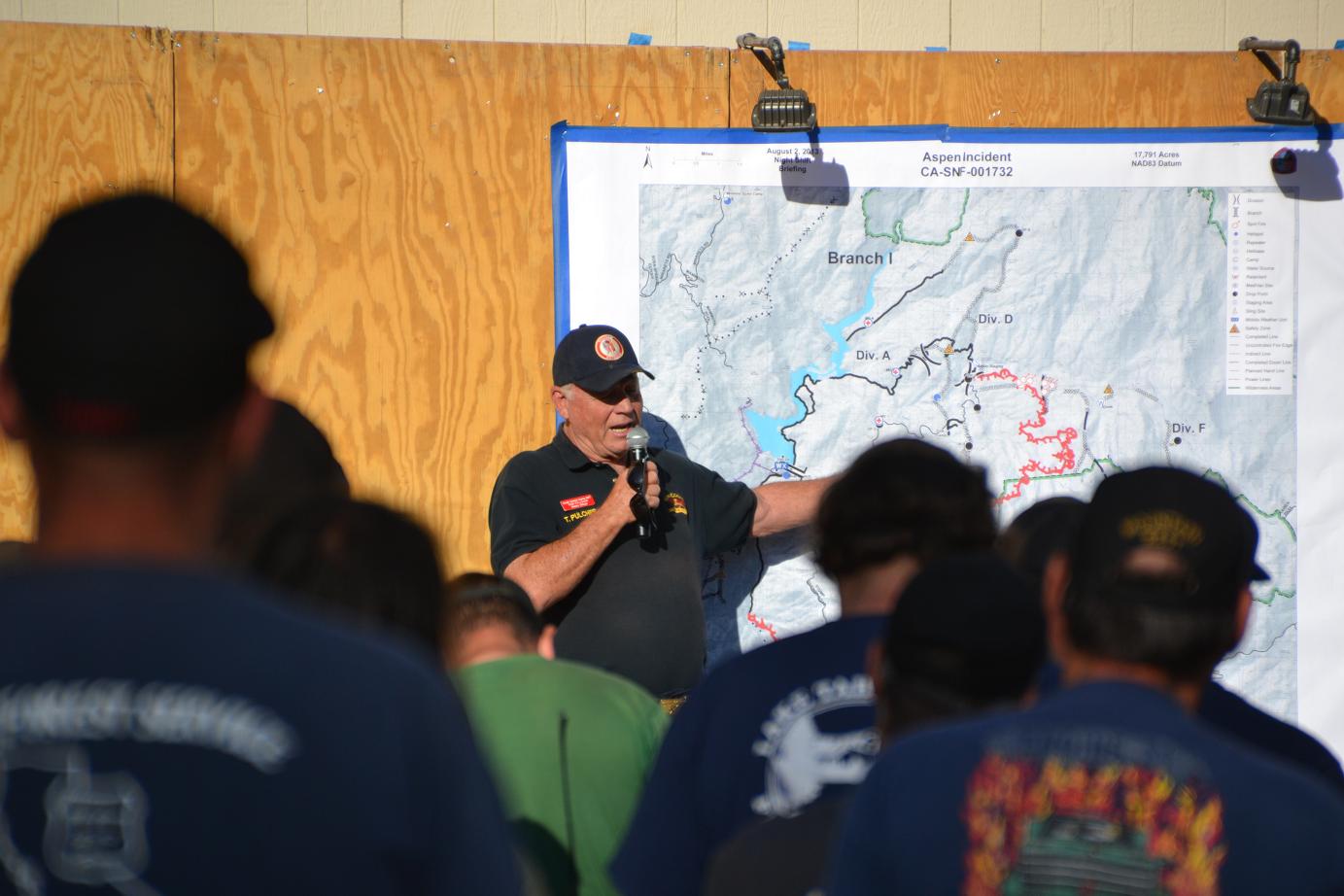
One topic from Safety Officer Tom Pulcher on this morning was snakes. In the evening briefing, it was snags. Pulcher also cautions the troops about being wary of the three “F’s” at this stage of the game. Fatigue, Familiarity and Focus.
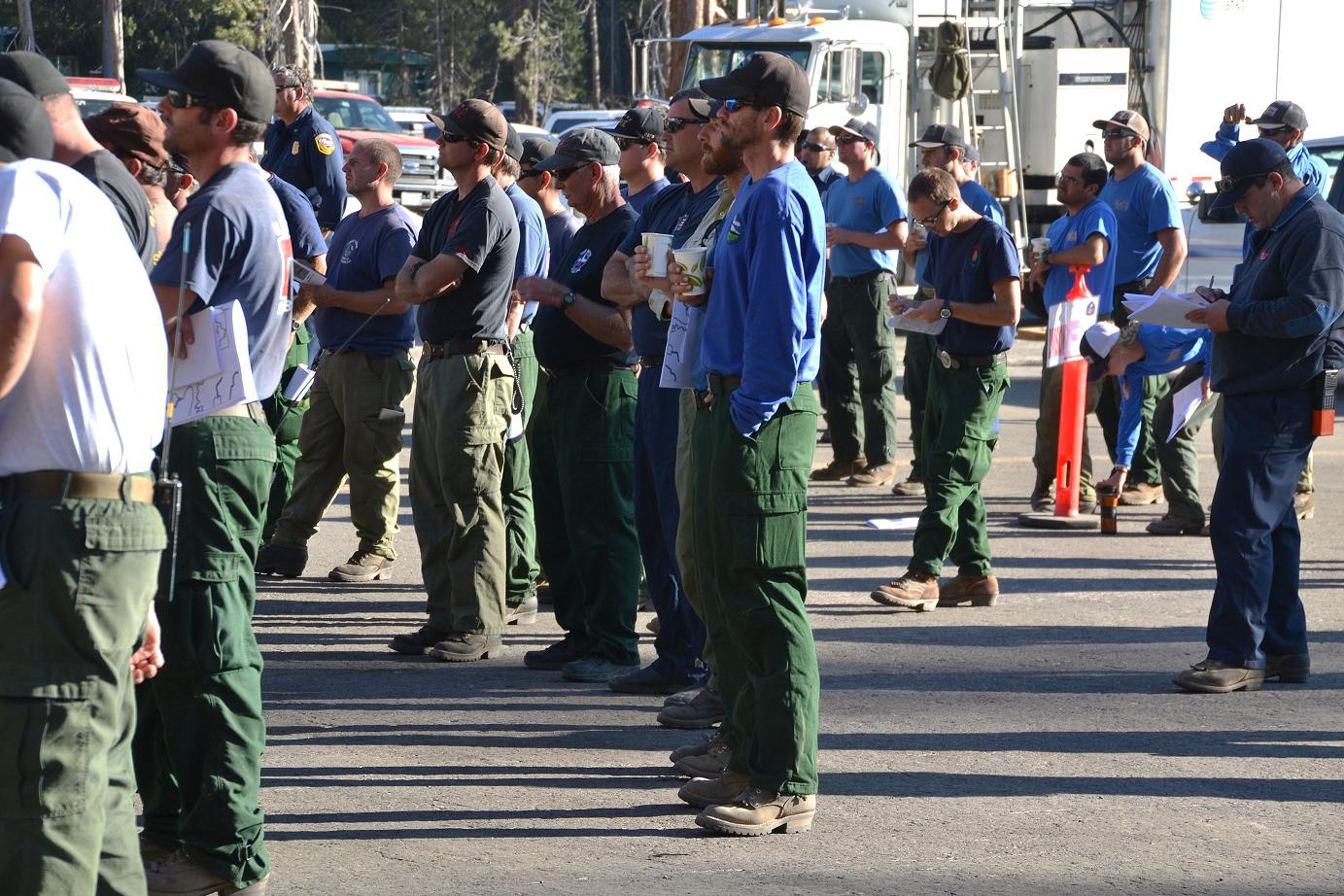
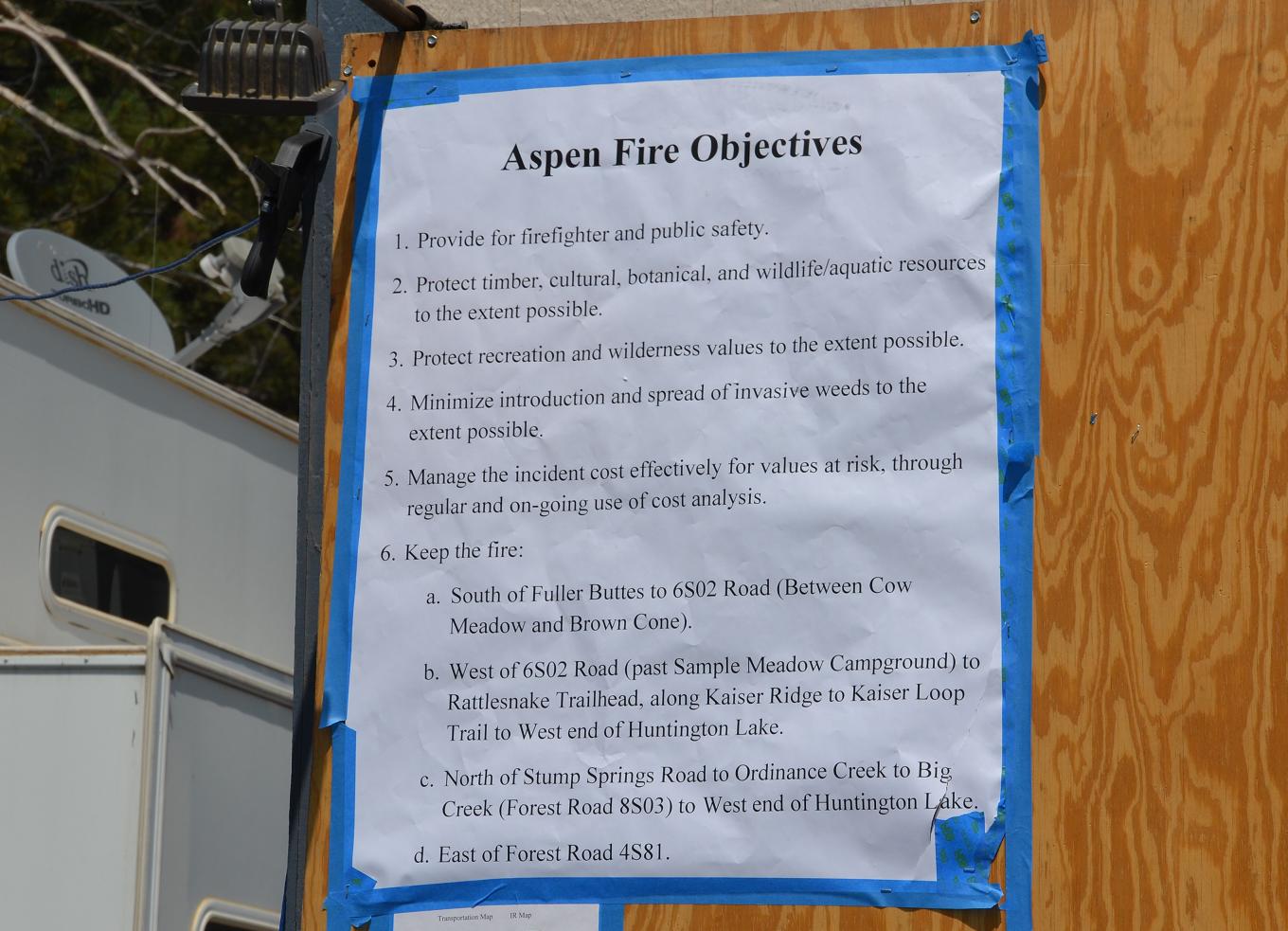
The safety record on this fire has been excellent so far, and those in charge are focused on keeping it that way, not only for the firefighters, but for the public as well.
Of course the goal is to put out the fire, but there are objectives of very high priority that include protecting wilderness, wildlife, cultural and botanical values throughout the footprint of the fire and the surrounding area. Those objectives are clearly stated and updated, posted on the board at the briefing area.
The people working here never forget that all these logistics are in support of the most important part of any fire camp – the firefighters. Working long shifts in heat, smoke and challenging terrain takes a toll both physically and mentally, and when crews come in off the line, filthy and exhausted, they need three things – food, shower and sleep.
Needing 4,000 – 5,000 calories a day to fuel their bodies, firefighters take full advantage of the chow provided to them by the contractors running the food service at camp.
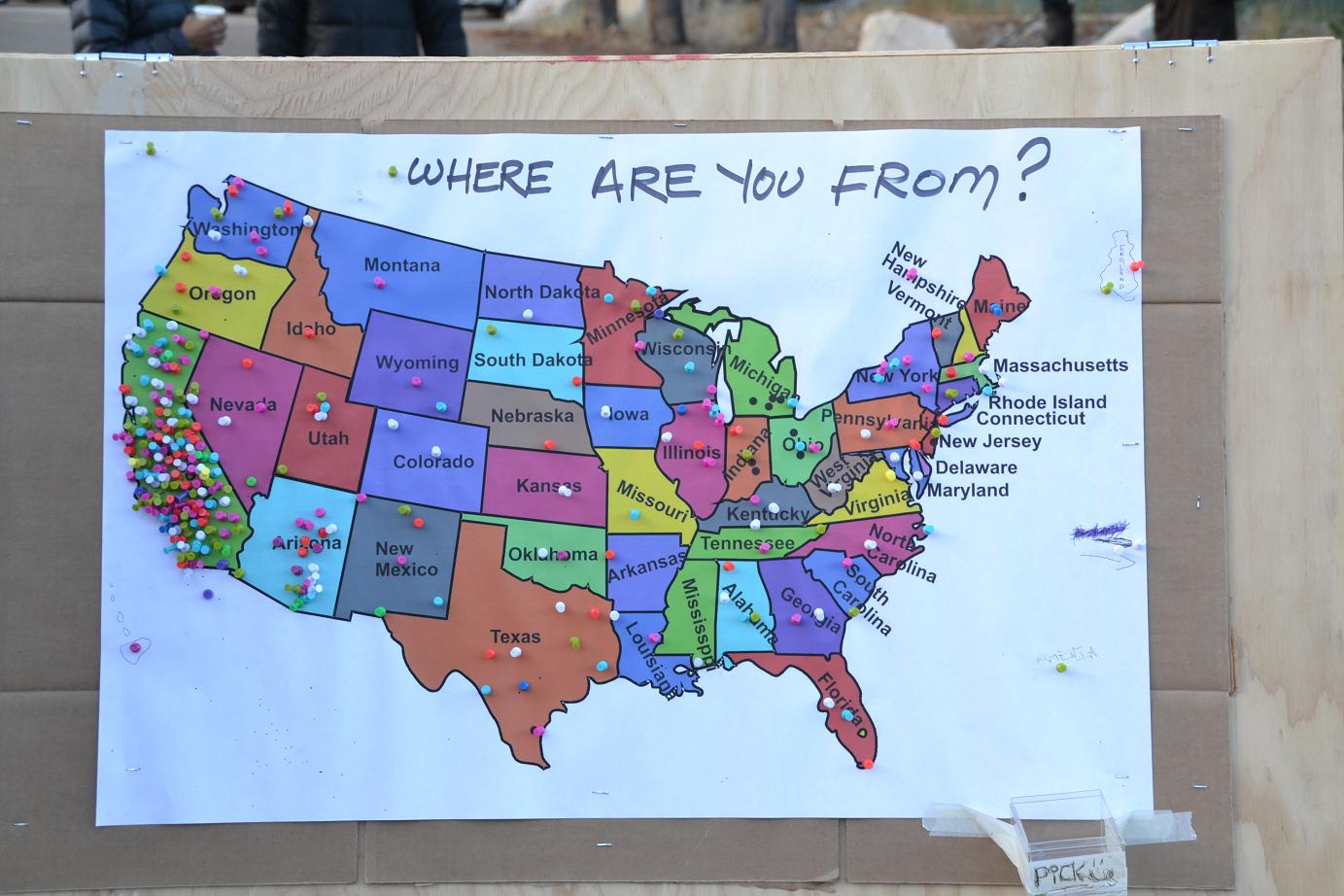
While waiting in line for meals, folks can peruse the information board where they’ll find the latest editions of a local newspaper, especially the sports section, along with comics, crossword puzzles and word jumbles for anyone wishing to scratch in the answer to a clue .

All through camp there are colorful little “kites,” stuck to message boards and power poles, lining trailers and washing stations – messages from kids thanking the firefighters “for being so brave,” and “for working so hard to put out the fire,” many with crayon drawings of flames and hoses, and stick fire people. And many that just say “We love you.”
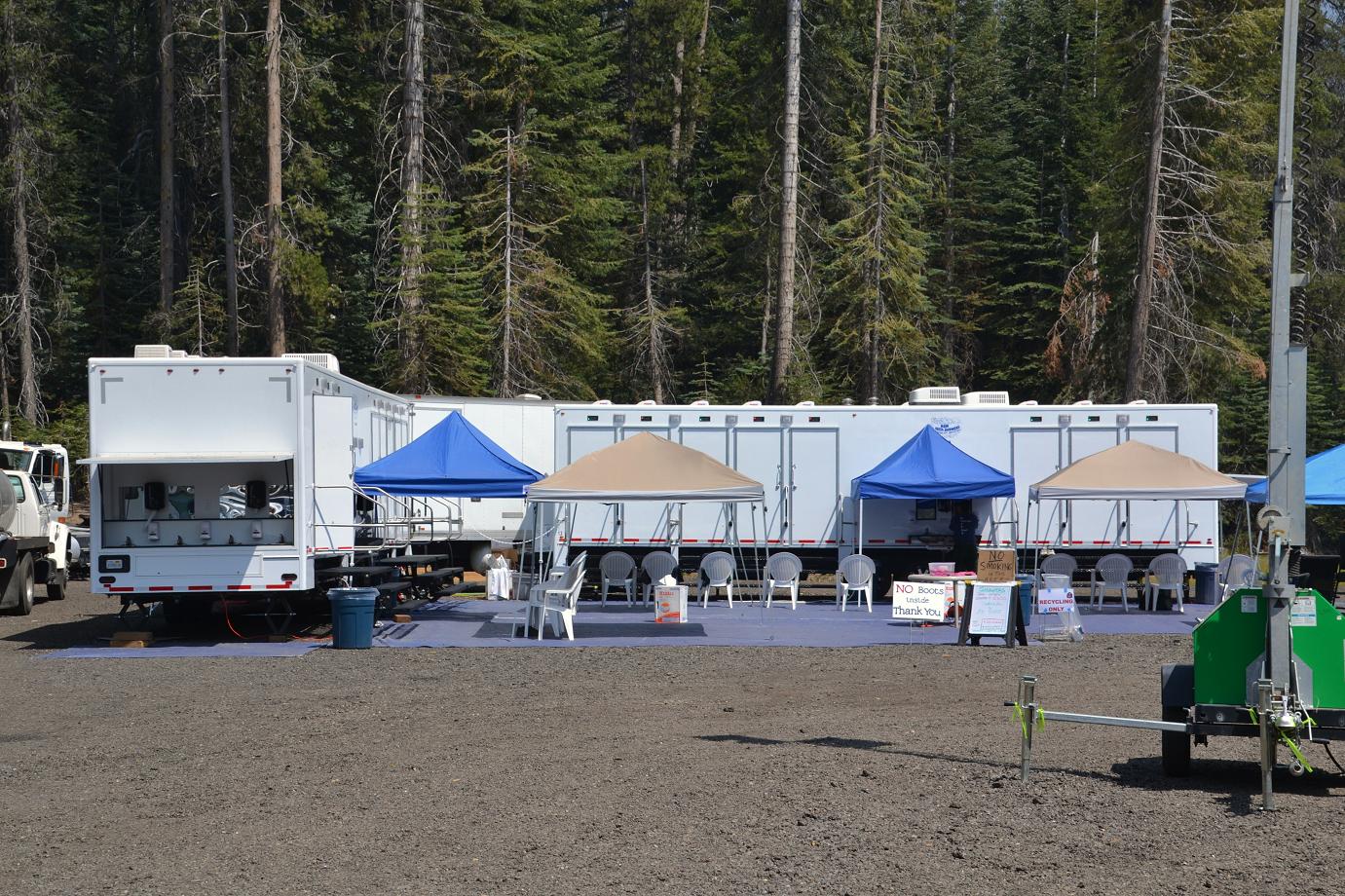
There are two full-service shower trailers at camp, each with eight individual shower units and changing rooms.
“We provide shower shoes, paper towels, soap, and a bodywash/shampoo combination,” said the gentleman in charge of the operation. “These are cleaned twice a day and are absolutely spotless. No more bladder bags hanging from a tree.”
The gray water is collected underneath, and fresh water is housed in the center of the trailer.
There is a big box that dispenses paper bath towels, but these are not like any paper towel you have ever seen. They are thick and dense and are the size of a bath towel.
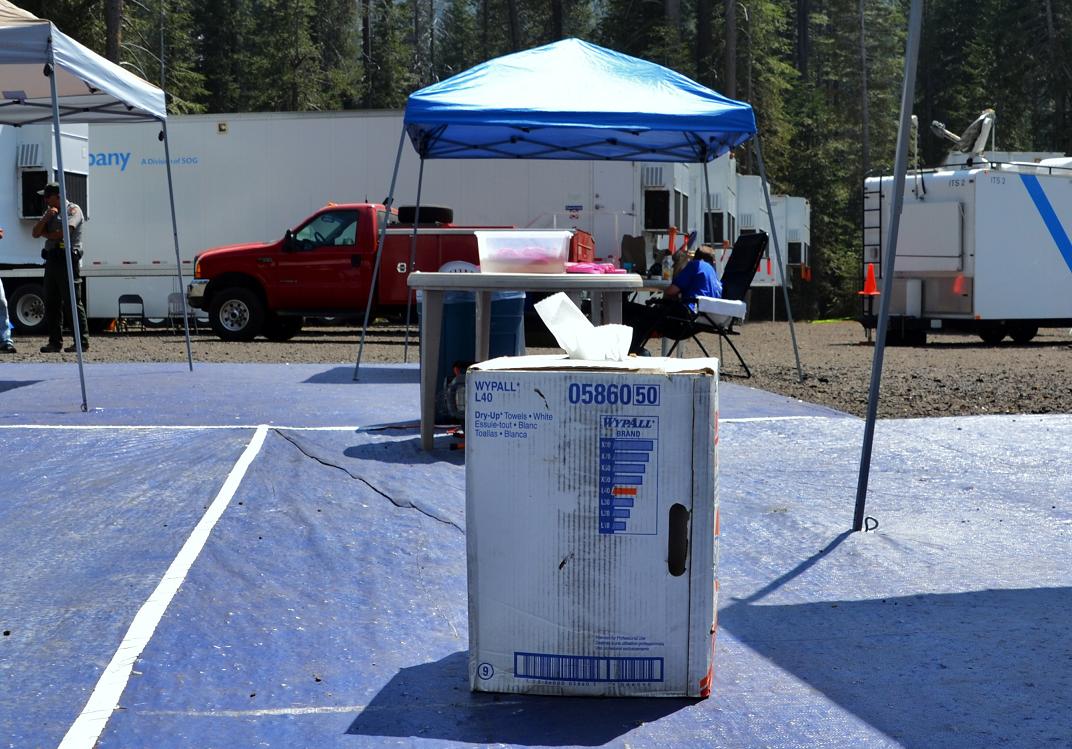
Once they’re scrubbed the day away at the showers, it’s time to deal with their clothing. The camp has a laundry facility right across the way, where they can take their sweat-soaked, fire-blackened clothes.
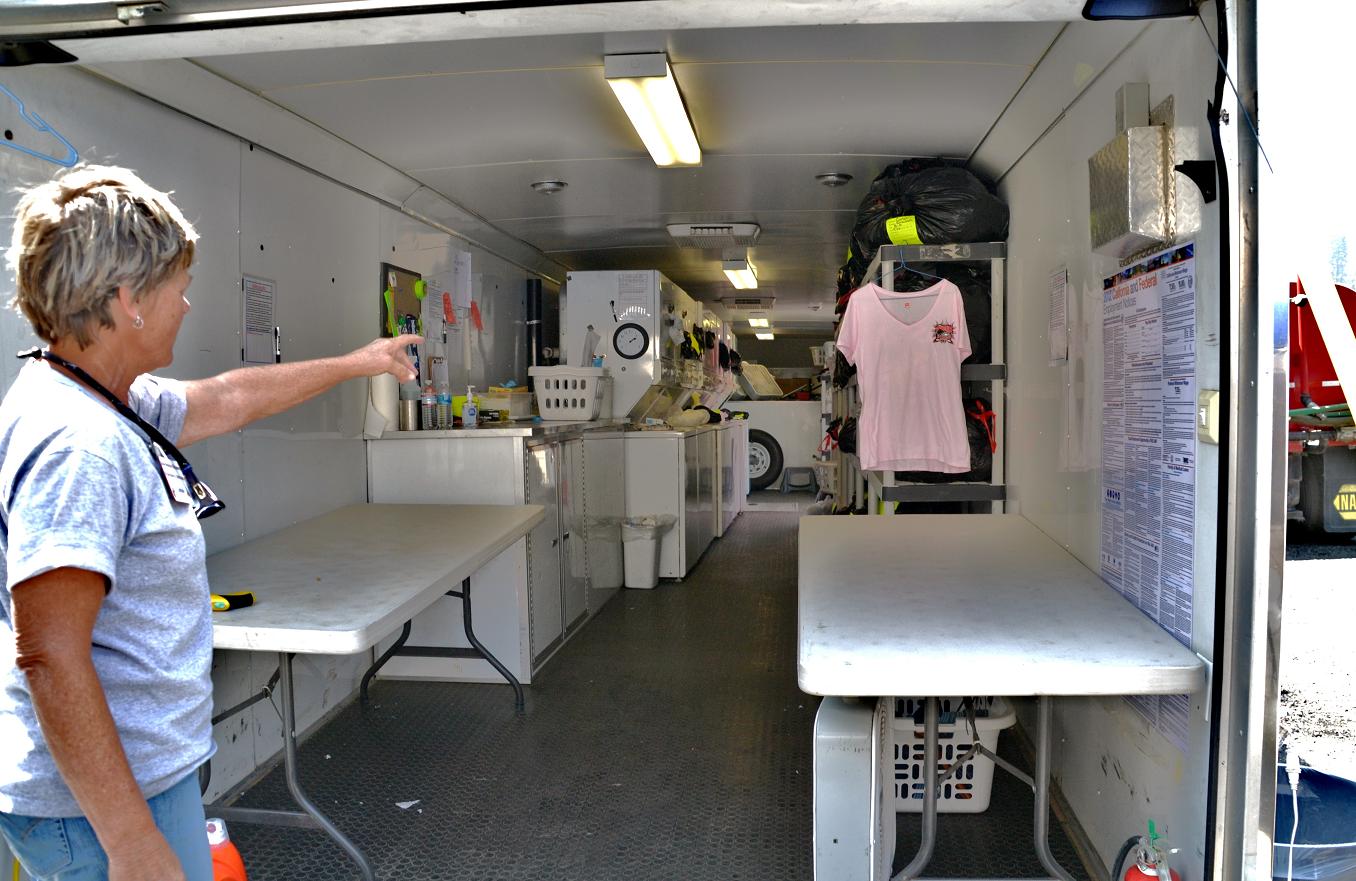
It is then laundered and placed in a tent next door, so that when firefighters come in off the line, or have had some sleep and are ready to gear up for their shift, they have clean clothes.
That is especially important when they’re working around poison oak, and any firefighter will tell you that having clean socks is a huge deal!
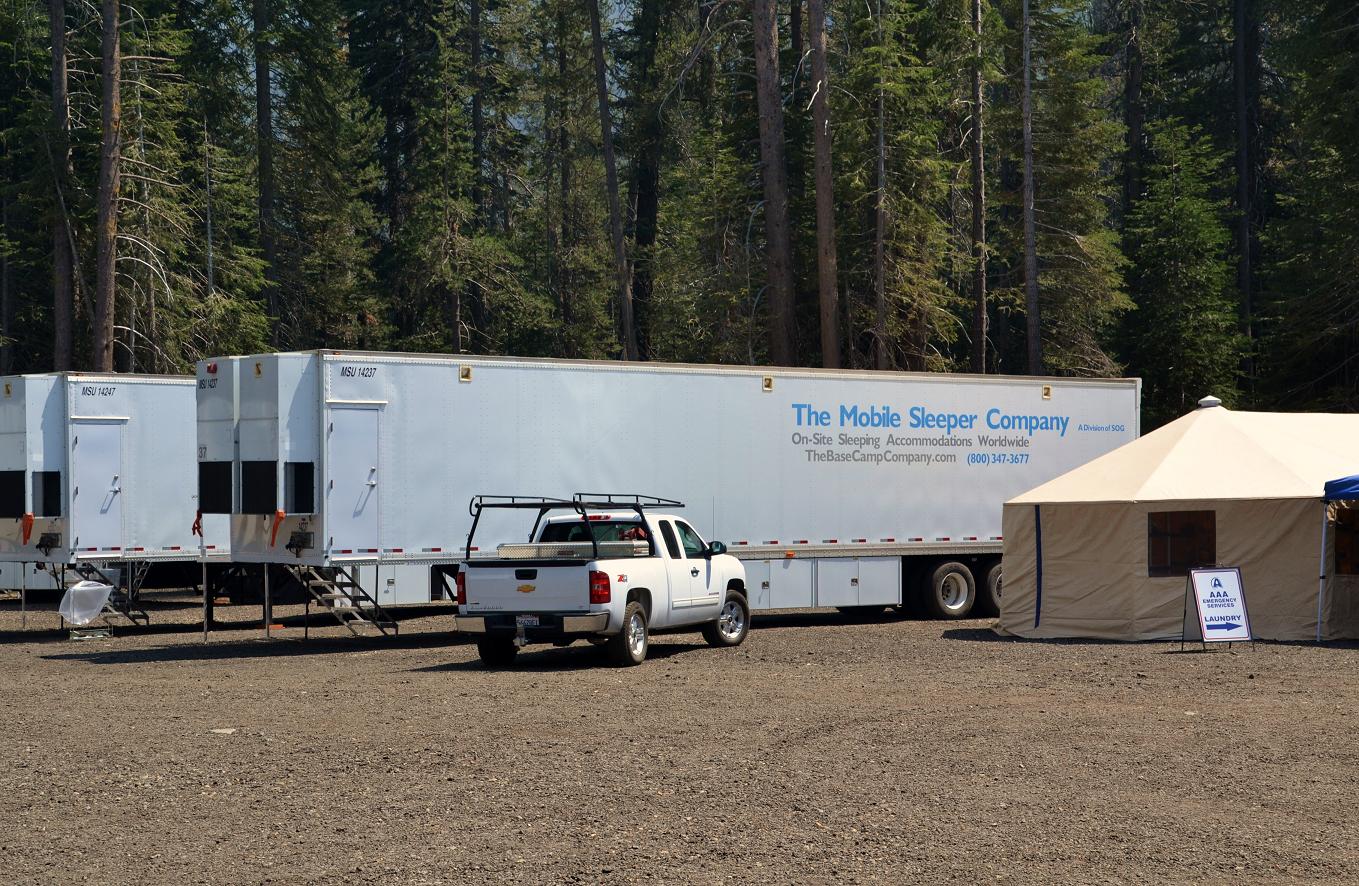
There are six mobile sleeper units in camp, and the benefits of these trailers cannot be overstated. They are climate controlled, have fresh air circulating constantly, and with no windows, they provide “blackout” conditions. They are practically sound-proof and the interior lighting is a soft blue.
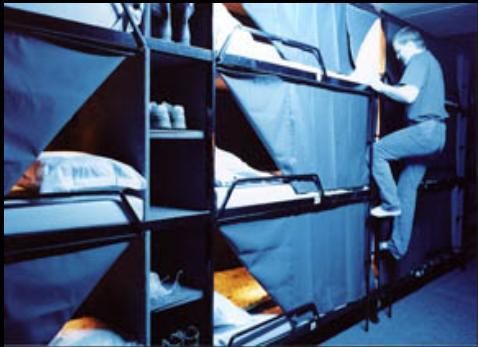
A trailer next to the mobile sleepers is “command central,” where personnel monitor the functions of each unit and take reservations for bunks. Crew bosses can stop at the window and tell the attendant how many of his people will require accommodations, and at what time.
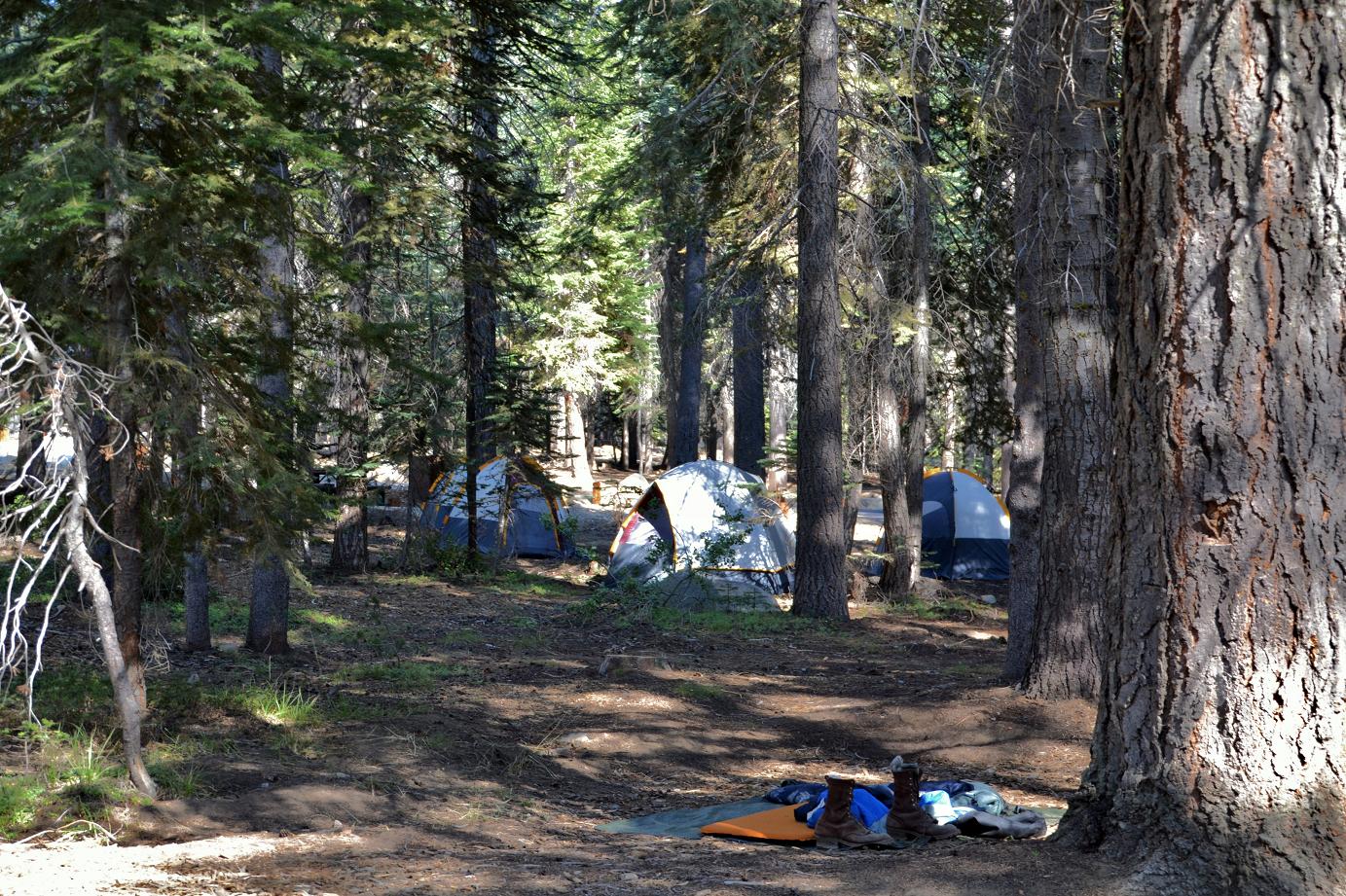
Some crews have set up in several campgrounds around the area, including Rancheria, Badger Flat and Midge Creek, which have all been closed to the public. For those who appreciate the peace and quiet of the forest, near a beautiful body of water (Rancheria is right on Huntington Lake), this may be an even better situation.

There are engines and crew buggies, pickups and SUVs, trailers, motorhomes and buses, all are parked neatly in rows. It’s amazingly orderly, considering all the traffic, and the only noticeable noise was the occasional “whoop” from a quick tap on the siren as a crew headed out to the lines.
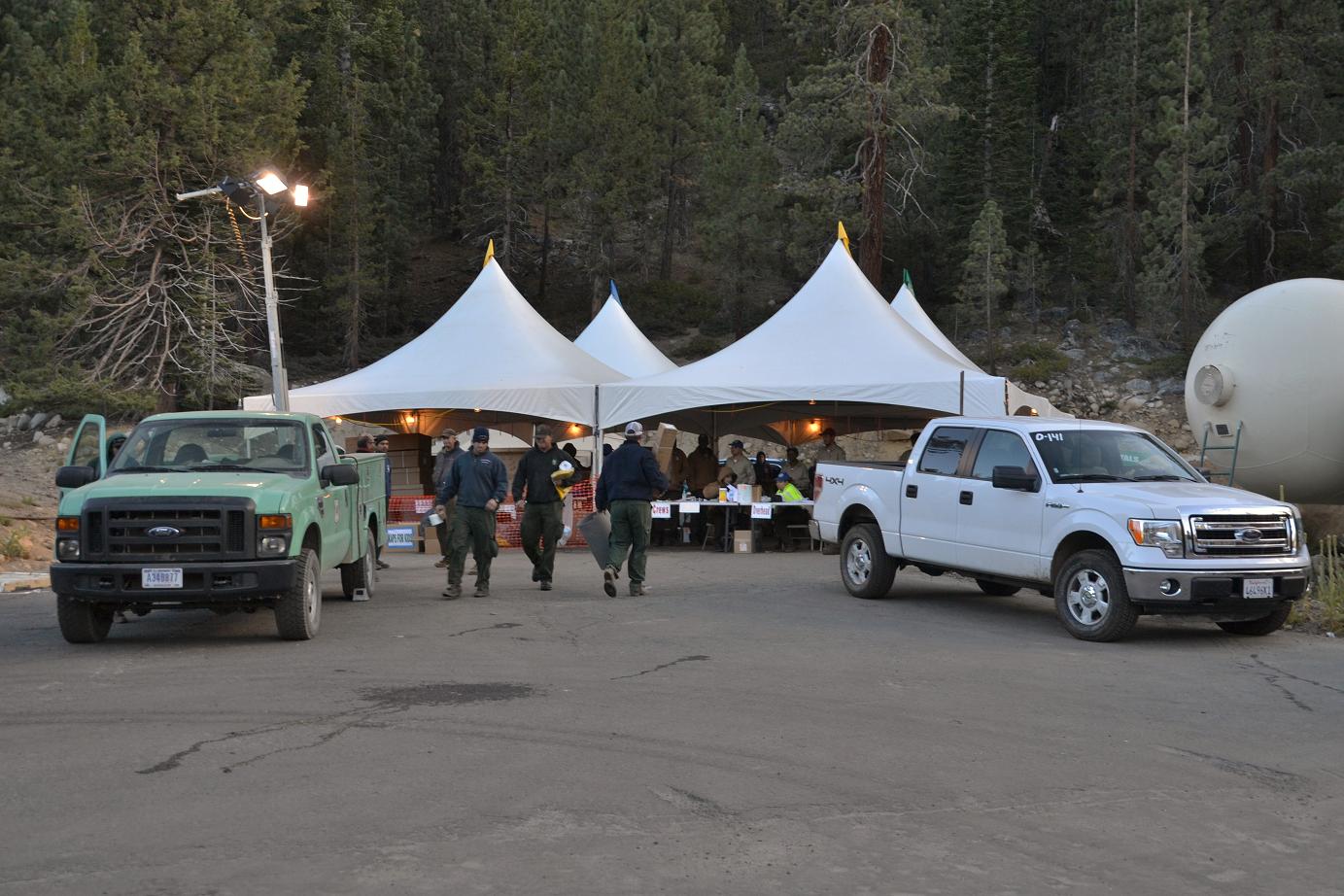
Helping all around fire camp are members of the California Conservation Corp. These young adults do everything from emptying trash and helping in the supply tent, to working in the food service area and trimming brush.
O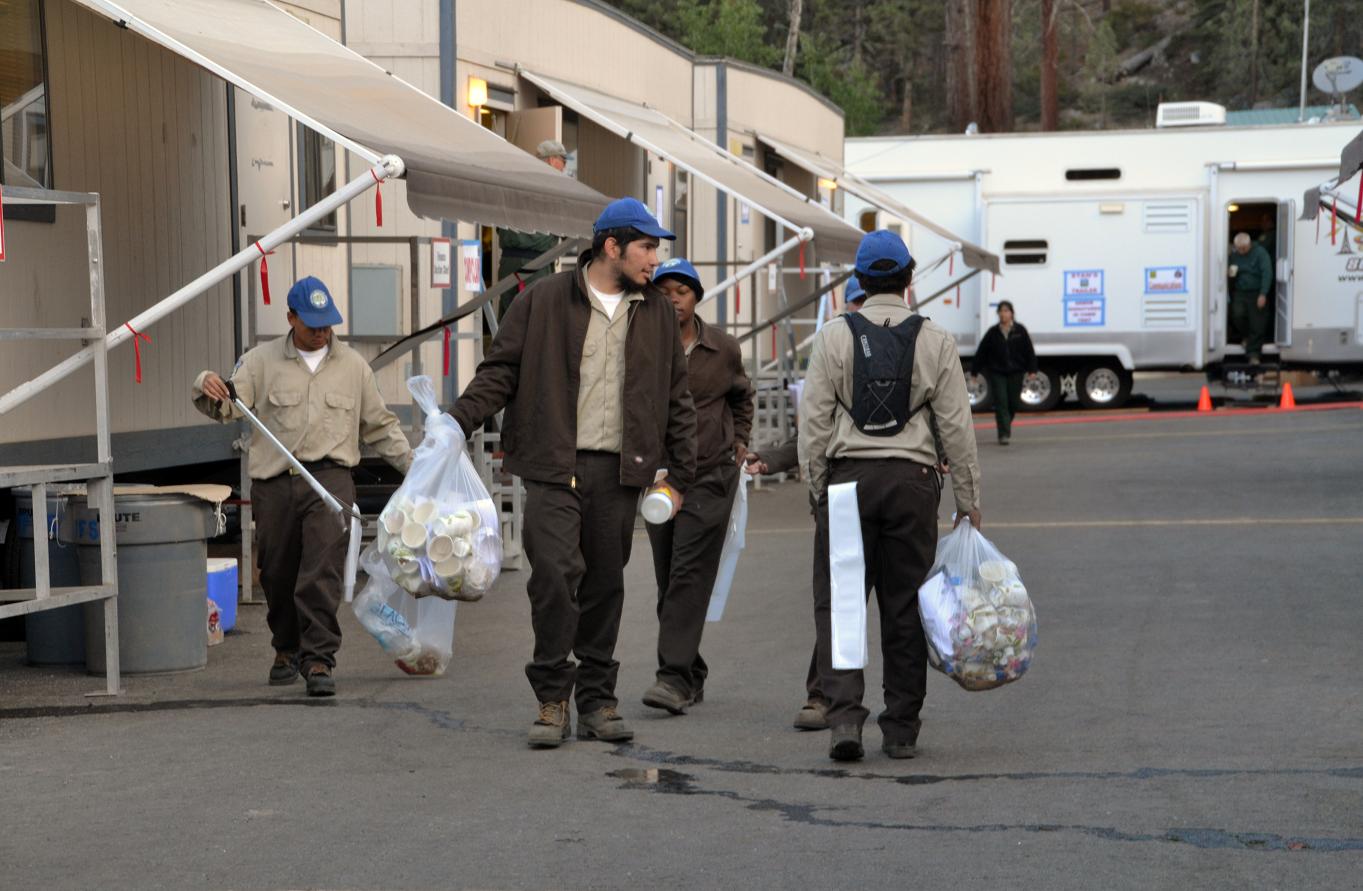
(This is a google earth image of the parking lot where fire camp is now located.)

